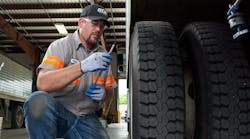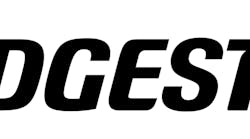Fleets are always looking for ways to reduce costs to improve their bottom line. Improving driver behavior, keeping fuel costs down and minimizing downtime while staying competitive in the marketplace are just some of the challenges fleets face regularly.
Tires are one of the biggest components of improving overall fleet performance. Maximizing the potential of tire assets and reducing associated operational costs begins with asset selection and comes full circle with proper maintenance.
Select the right tire
Just as vehicles, equipment and tools are becoming more application-specific, so are tires. It is imperative commercial fleets pair vehicles with a compatible tire for each application and wheel position to reach full performance potential. Even the best tire in the wrong application will not deliver intended results.
Each operation has its own needs and characteristics. For example, high-scrub, urban vocational applications involving regional vehicles that make numerous turns and frequent starts and stops demand a specialized tire with a durable tread and scrub-resistant sidewall. For long-haul, high-speed operations, a fuel-efficient tire with retread capability delivers fuel and cost savings potential. For fleets traveling in both on- and off-road environments where rough road conditions require greater traction, ideal tires feature a deeper, more open tread pattern and built-in protection from potential hazards.
Additionally, tires feature various load-carrying capacities, so fleets should ensure tires are of the correct size and load range to meet the vehicle’s Gross Axle Weight Rating (GAWR). Exceeding this limit can impact tire performance such as the tire’s lifespan, driver safety, fuel economy, ride quality and responsiveness. Keep in mind that operating temperature, vehicle speed, tire wear and load weight can also take a toll on load capabilities.
The tire selection process should begin with identifying a fleet’s business objectives, desired performance attributes and fleet characteristics, including vehicle type, fleet size, application, route, haul, climate and annual mileage. Fleets should work with a trusted tire and service provider to discuss their goals and identify the best product to meet their specific needs.
Implement a routine maintenance program
After tires have been properly selected and route and load considerations have been made, a proactive maintenance regimen should be set to guide tire care.
It is recommended fleets perform routine pre-trip inspections and quick assessments while on the road to monitor tread wear and make necessary adjustments. A hands-on tire assessment helps fleets proactively identify concerns, such as worn bushings in the suspension, inner rib wear, heel-toe wear or scrub out (also known as flat spotting) caused by misalignment or improper tire pressure.
In addition to conducting assessments themselves, fleets should work with a trusted tire dealer to have their tires regularly inspected.
Incorporate retreads into the tire program
Fleets can achieve maximum productivity and a lower total cost of ownership by utilizing retreads. Quality retreads have performance benefits comparable to new tires with the same tread type and application. Bandag customers who average two retreads per tire casing have been able to lower their tire costs to 1.2 cents per mile, well below the industry average.
Quality retreads also offer some of the lowest rolling resistance among both new and retreaded tires, making them one of the most fuel-efficient offerings for fleets.
Furthermore, fleets can work with service partners to take advantage of intelligent technologies like the Bandag Alliance System (BASys), which provides fleets with real-time inventory tracking and performance data. Tools like this can help fleets to proactively manage tire assets and maximize casing life for retreading.
Having the right tire for the job is the cornerstone for optimal fleet performance. To capitalize on the full potential of these valuable assets, fleets must be intentional with their applications, routes, haul loads, maintenance and retread management programs. This holistic approach helps deliver on short- and long-term business goals, paving the way for improved performance, efficient mobility and reduced total cost of ownership.
Sanjay Nayakwadi is the director of product strategy for Bridgestone Americas Tire Operations. He joined Bridgestone in 2014 and oversees commercial product development collaborating with cross-functional teams to deliver innovative, products to Bridgestone commercial customers.



